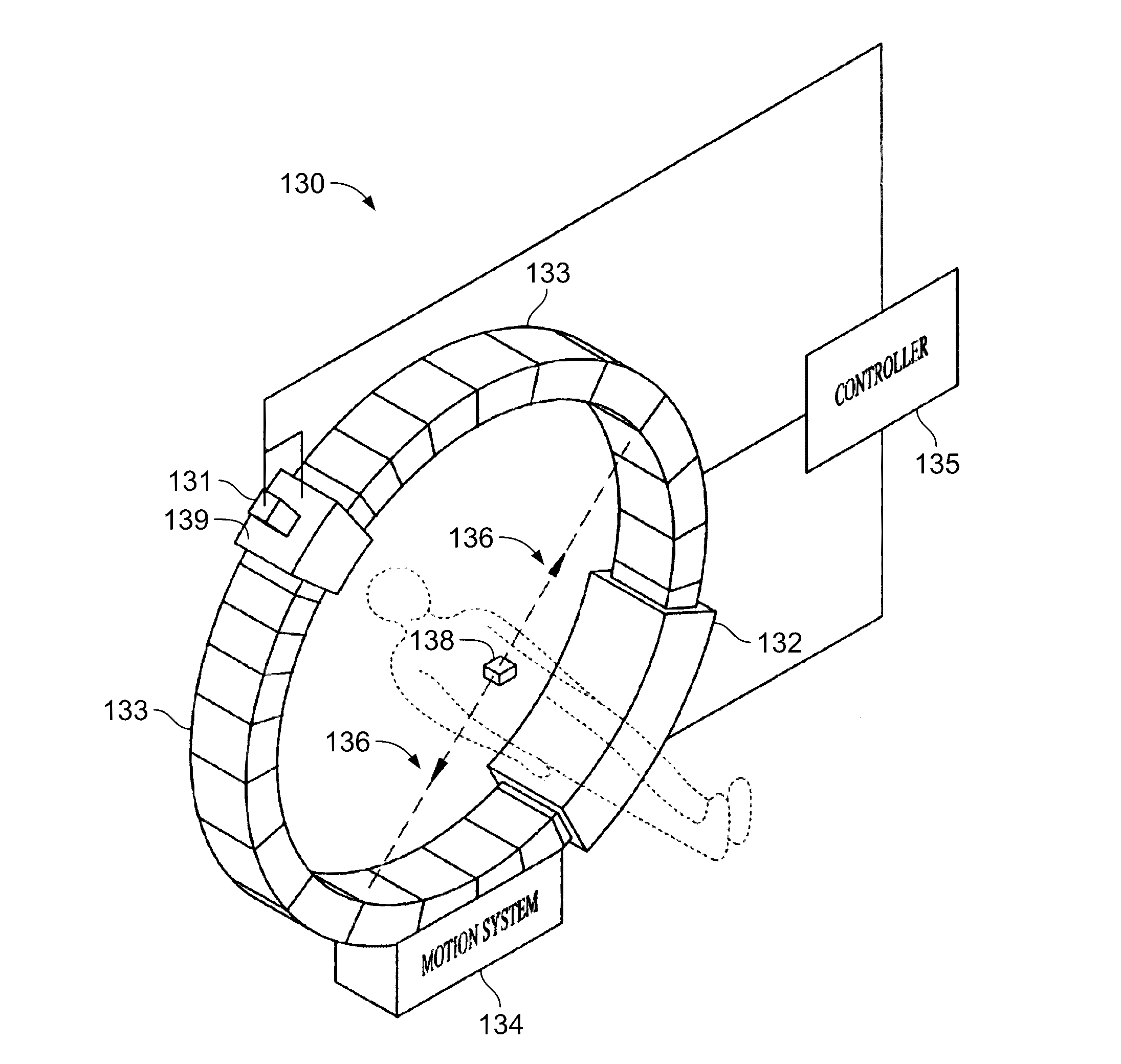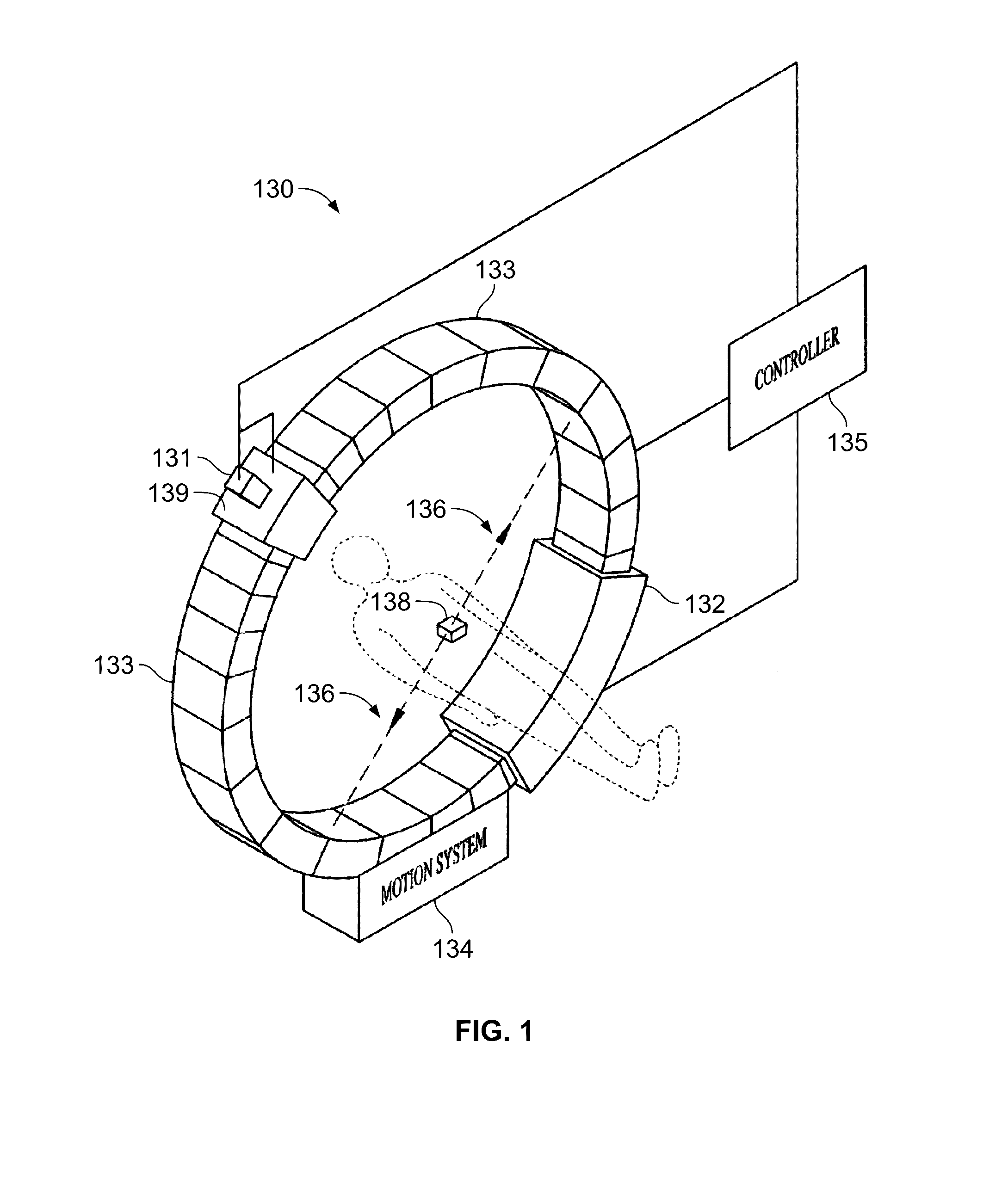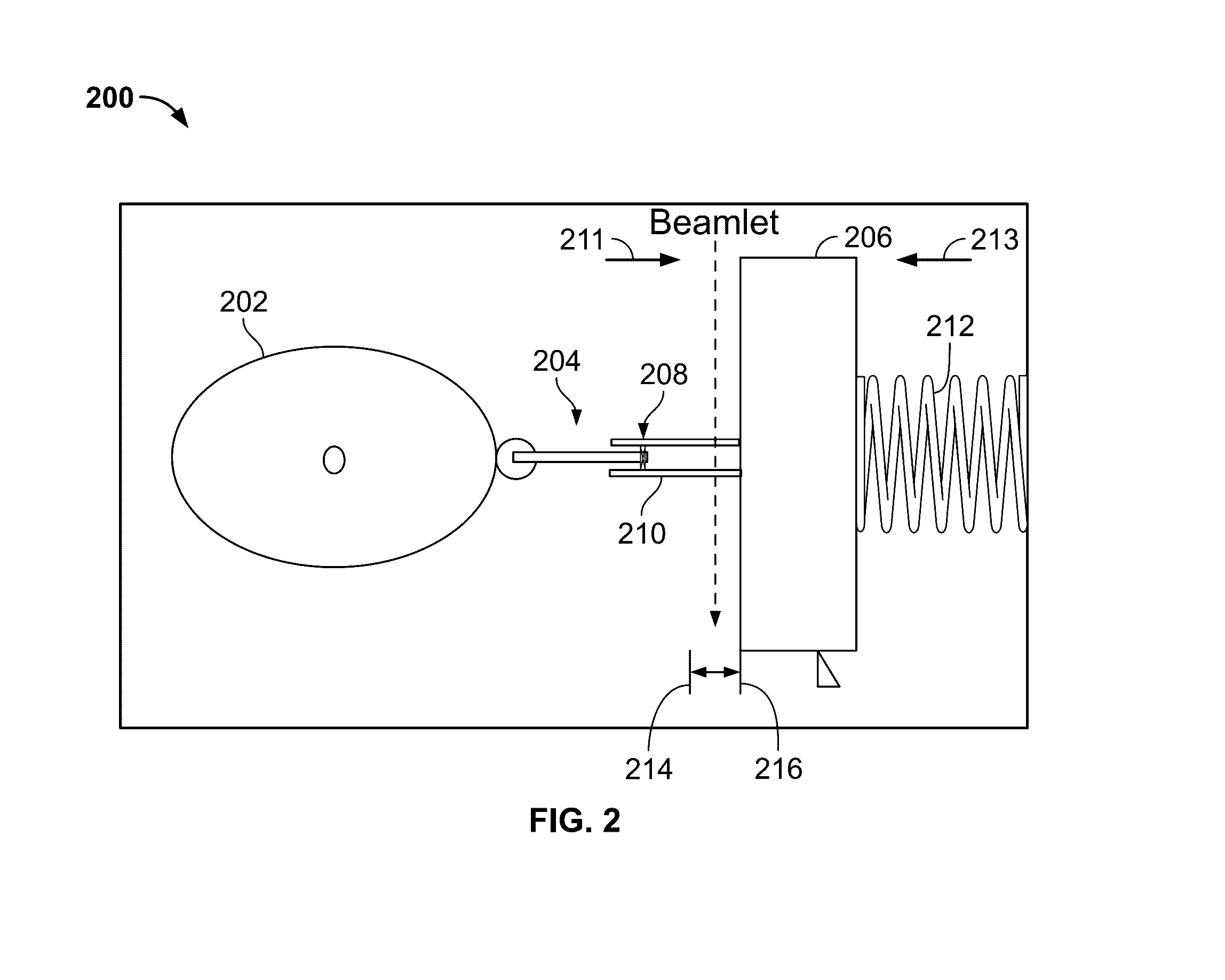High bandwidth binary multi-leaf collimator design
a collimator and multi-leaf technology, applied in the field of high-bandwidth binary multi-leaf collimator design, can solve the problems of unintentional exposure of non-tumorous tissue to radiation, treatment plan may not account for changes in tumor geometry and/or patient anatomy, etc., to facilitate rapid and reliable movement of collimator leaves, reduce latency, and facilitate the effect of leaf movemen
- Summary
- Abstract
- Description
- Claims
- Application Information
AI Technical Summary
Benefits of technology
Problems solved by technology
Method used
Image
Examples
Embodiment Construction
[0035]Disclosed herein are various drive mechanisms that may be suitable for use in a multi-leaf collimator. Such leaf drive mechanisms may facilitate the rapid and reliable movement of collimator leaves such that the collimator is capable of transitioning leaves between open and closed positions in about 10 ms or less, e.g., about 4 ms or less. Various leaf drive mechanisms are described below, including cam-based drive mechanisms, spring-based drive mechanisms, fluid-power drive mechanisms, and / or electromagnetic drive mechanisms. In addition to increasing the speed of leaf movement by increasing the speed of the leaf drive mechanisms, some multi-leaf collimators may optionally comprise reduced-weight leaves where only the material in the radiation beam path have high-Z materials (e.g., tungsten), and the peripheral support structure(s) of the leaves comprises lighter-weight materials. Also disclosed herein are leaf arrangements that may help reduce the friction between leaves, as...
PUM
 Login to View More
Login to View More Abstract
Description
Claims
Application Information
 Login to View More
Login to View More - R&D
- Intellectual Property
- Life Sciences
- Materials
- Tech Scout
- Unparalleled Data Quality
- Higher Quality Content
- 60% Fewer Hallucinations
Browse by: Latest US Patents, China's latest patents, Technical Efficacy Thesaurus, Application Domain, Technology Topic, Popular Technical Reports.
© 2025 PatSnap. All rights reserved.Legal|Privacy policy|Modern Slavery Act Transparency Statement|Sitemap|About US| Contact US: help@patsnap.com



